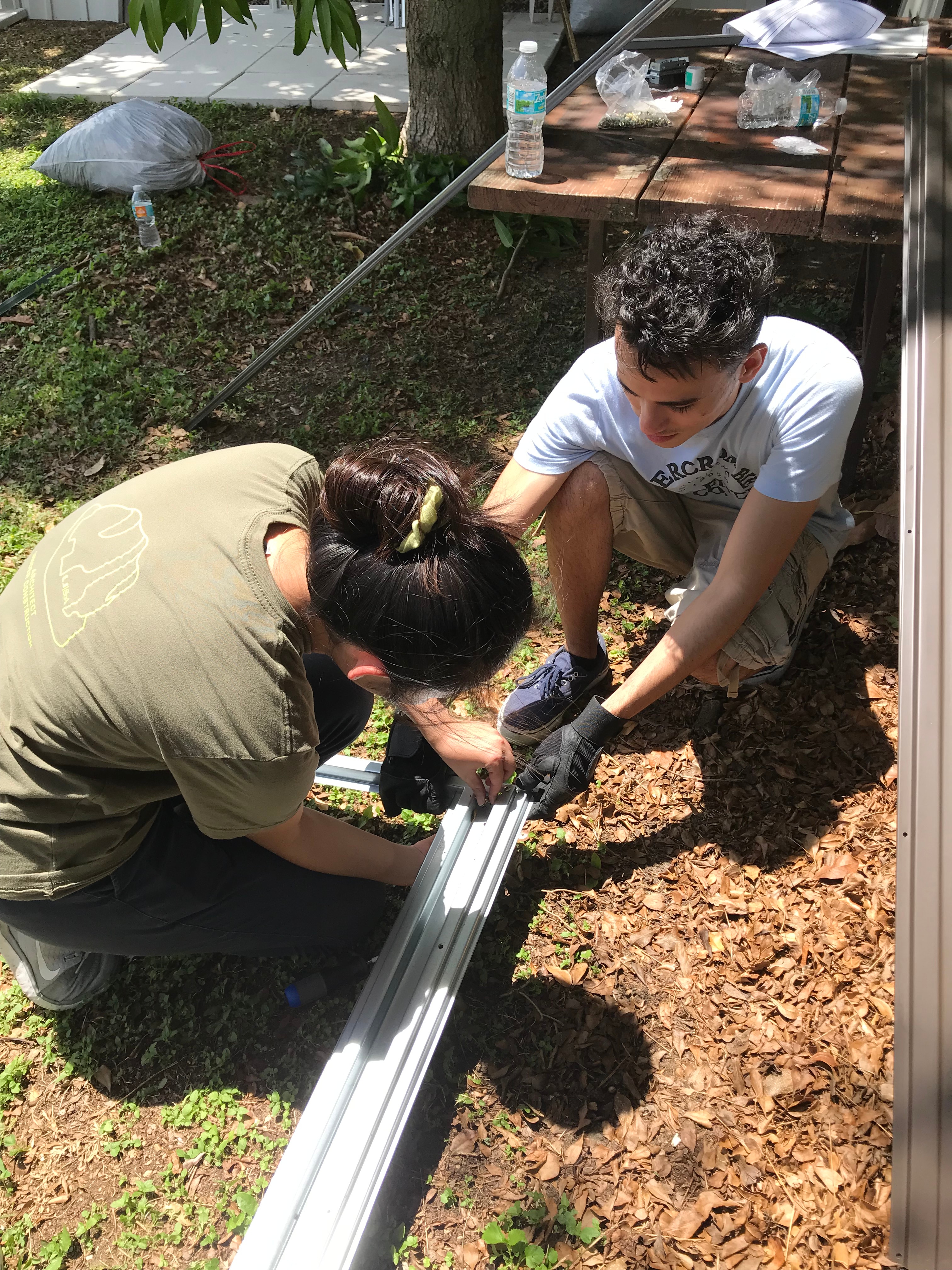Every semester, the members of the Alpha Rho Chi-Agamedes Chapter plan and execute a charity design project to apply their learned architectural skills to improve our communities. Teamed up with B.Arc and M.U.D. alumna Bruna Bacchi, the chapter’s target for Spring 19 was a non-profit organization that gives homeless dogs a second chance: Born Free Pet Shelter.
A utility shed, or storage unit, was the original project chosen by the chapter. Half way through the semester, another project was added to the chapter’s goal: an obstacle course for dogs. The students wanted to give something for the dogs as well as the volunteers. Wood, PVC pipes, and corrugated metal formed a creative and inventive obstacle course for man’s best friend.
Both projects were planned and designed in the school. At the end of the semester, the dedicated dog lovers met in the shelter to build and complete the projects. “I am so happy we got to do these projects” said Michael Burke treasurer of the chapter, “we had the opportunity to give back to our community, help a dog shelter, and learn more about construction. It was a long day, but definitely worth it.”
How did you learn about Born Free Pet Shelter's need for a utility shed and obstacle course for the dogs?
Bruna: I do independent work rescuing animals and know animal shelters and organizations well. When I was contacted by the students at Alpha Rho Chi-Agamedes Chapter with their wish to do a project involving homeless animals in shelters, I suggested the Born Free Pet Shelter.
The non-profit rescue organization is the temporary home for more than 100 adoptable dogs, and some cats. The shelter is entirely run by volunteers and donations – truly incredible! However, due to its limited resources, it doesn’t receive the same attention as other animal rescue organizations do. The shelter needs improvements, and they are open to all that wish to get involved in whatever way they can.
We met with the shelter volunteers that explained their needs and vision for the place: the utility shed was one of them. The obstacle course was the students’ idea! They wished to propose something functional and fun for the dogs, and that is when the obstacle course came to plan as well.
How long did it take to build these projects?
Bruna: From the first meeting to the day the utility shed and obstacle course were built in the shelter, it took the entire semester.
How did these specific projects sharpen the students’ skills in their designated areas of Architecture?
Bruna: More than sharpen their skills in architecture, the projects broaden their view of it. Architecture is about quality of life, whether that is related to a person inside a building or a dog inside a shelter. Although not said enough, architecture involves all living things. By choosing to do two distinct architecture projects, one embracing the volunteers’ needs and another embracing the dogs’ needs, the students connected to a different dimension in architecture by understanding how broad and generous our field genuinely is.
How were the students able to use principles from their programs in order to build the shed and obstacle course?
Bruna: Each project required different architectural approaches as it had to be designed for different anatomies: the utility shed for humans and the obstacle course for dogs. However, the same design sensibilities had to be applied to both projects: scale, aesthetic, proportion, functionality, structure, construction methods. These design skills taught in architecture classes were applied to both projects as a base to grow and explore upon.
In your opinion, what are some ways that architects can infuse sustainability and resiliency into architectural projects intended for charity?
Bruna: A simple way architects can design sustainable and resilient projects for charity is to design with a great sense of empathy. Our profession has an immense impact in the world, especially to the lives of people and animals in it. We must design with a certain sensibility in order to ensure the impact we are causing is a positive one. Always design with empathy.

